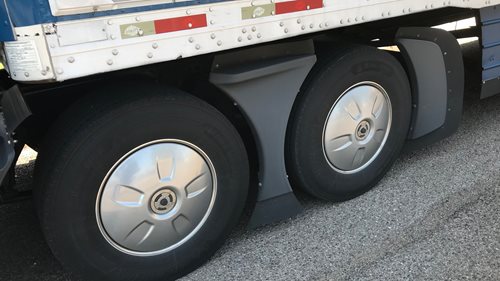
Much like the story of Goldilocks where she found the porridge to be too hot, too cold, or just right, the same holds true for the air pressure in our tires. Having the right pressure to do the right job, equals the best tire performance.
Having too much air pressure in our tires has these positive effects:
- an overly inflated tire runs cooler
- it rolls easier
Negative effects of too much air pressure in our tires are:
- decreased puncture resistance
- irregular river wear
- harsh ride
Advantages of low air pressure in our tires have these positive effects:
- larger footprint on the highway for better braking and traction
- better ride compliance
- increased resistance to punctures due to increased compliance of the tire
Disadvantages of having low air pressure in our tires are:
- increased flex of the tire will cause the casing to run at a higher temperature which may lead to tire failure
- irregular tread wear due to increased flexing of the tire casing
- reduced fuel mileage due to increased rolling resistance
Tire pressures have a direct impact on how quite literally the rubber meets the road. As an avid off-roader with a Jeep, ATV, and dirt bikes, tire pressure is often used as a way to affect how a tire performs in many difficult situations. The most common practice when off-road in trying terrain, is to reduce the tire pressure in order to increase the footprint of the tire in low traction conditions. It’s also common to lower the tire pressures when encountering sharp rocks, as it allows the tire to flex instead of concentrating the pressure around a jagged object, which could cause a puncture.
It’s necessary to increase the tire pressure when returning to travel on the highway. If you were to leave an off-road location and travel at highway speeds, these low pressures would cause the tires to flex, creating more heat, and eventually leading to tire failure. So, back to our semi-trucks and trailers where we spend the majority of our time at highway speeds, and very little time off-road. It becomes important to have the right tire pressures for the loads we’re carrying on each of our tires. These values should be based upon the tire manufacturer's recommendations from a tire inflation table.
Make sure to read the chart and its notes carefully, as in many cases, the pressures listed can be the minimum pressure required to support the weight of the load being carried. Keep notes of how your tires wear over the long haul, so that you may develop your tire pressure maintenance to get the maximum performance from your tires. Having an air hose to attach to your air brake system, allows you to not only maintain your tires, but also make adjustments to change your tire's air pressure in the field as needed.
When I say in the field, I say this quite literally, because you may be delivering in a field that offers low traction. If you’re going to be traveling slowly, it may benefit you to lower your air pressure, in order to get increased traction. This is an old trick I would employ at times when picking up Christmas trees from the farms. Oftentimes, these would be a few miles down snowy, icy, and otherwise, unimproved roadways. Travel speed was generally at a 10 to 15 mile an hour pace. By lowering the tire pressures, I was often able to improve traction well enough to get in and out of difficult situations without assistance. But remember, it’s extremely important to return your tires' air pressure to the correct amount, before hitting the highway.
So, in the end, just like Goldilocks desire for the right temperature of her porridge, the same goes for having the correct air pressure in your tires.